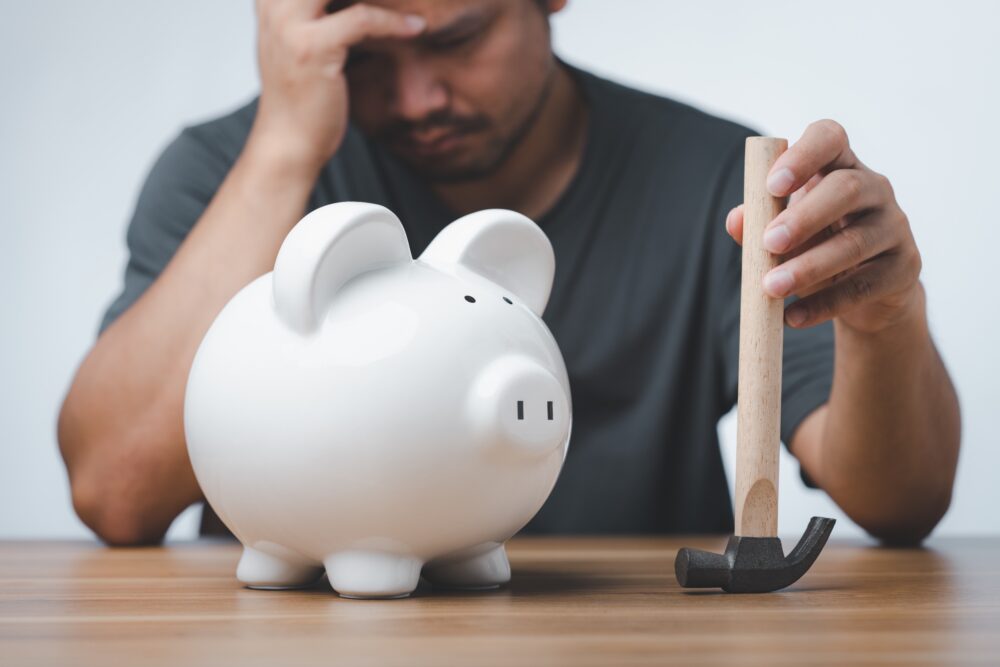
When you start making a serious effort to save money, you have to guard against money saving measures getting out of control and costing you more than you’re saving. Even after you get your finances under control, this problem can rear its ugly head. I still sometimes struggle with finding a new way to save, and then going completely overboard until I’m spending more than I’m saving. It’s sneaky, and it’s easy to justify because, “Hey, I’m saving money!” Until you’re not.
What constitutes a money-saving effort gone wrong?
Where do good intentions go off the rails? Here are a few examples (which may or may not be from my own life…):

Switching to streaming, only to subscribe to every service.
When the cable bill hit the stratosphere, we switched to streaming. The savings were substantial and it was wonderful. Until we subscribed to another service, then another, and another. And, oh yeah, threw in a cable replacement service like YouTube TV. Before we knew it, we were spending just as much, if not more, than we were on cable. Oops.
Taking up a “cheap” hobby/entertainment, only to buy way too much stuff.
A long time ago, I took up board games for a cheap source of entertainment. Then I really got into it as a hobby and that “cheap” entertainment became a money drain. (And don’t get me started on what Kickstarter can do to your wallet.) While it’s true that each individual game doesn’t cost that much and offers a lot of replayability (making it relatively cheap entertainment), buying a lot of games negates the savings and becomes a huge expense.
This can happen with any hobby. You take up something that seems inexpensive, and it is when taken individually, but when you become obsessed with it, it drains you dry. Reading, arts and crafts, photography, writing, model making, wood carving… Whatever it is, it can spiral out of control.
Taking up a craft in order to make things for others instead of buying gifts, only to spend a shedload on supplies.
I once took up crafting as a way to make cards and gifts for others. It seemed like a less costly way to handle gift-giving. And it was, until I decided I needed more/better supplies, and that if one gift was good, giving someone more was better. After a while, I would have been better off buying gifts at Tiffany’s.
Taking up DIY only to blow a ton on tools.
Learning to fix stuff around the house or on your car can be a great way to save money. If you can avoid calling a professional, it’s got to be cheaper, right? Well, yes, but not if you also buy every tool and gadget in the hardware store. I know several people who have spent way more on tools than they ever would have on a repairman. Buying tools isn’t a bad thing. As long as you use them and you don’t have more than you need, great. But if you’re buying tools under cover of “saving money,” then you’re in trouble.
Cooking at home and buying every appliance and gadget. (Or gourmet ingredients and booze.)
Prefer the kitchen over the garage? The same problem applies. Yes, cooking at home is cheaper than eating out. But if you use “cooking at home” as cover for buying every appliance, pan set, cookbook, and knife on the market, you’re not saving money. Buy what you need to make reasonable meals and leave it at that. Buying a top of the line mixer because you might make a cake at Christmas is trouble.
And while treating yourself to a deluxe meal at home complete with good wine, etc. is a fun treat, it shouldn’t be your default cook-at-home strategy. Gourmet food and booze isn’t cheap. Yes, it’s probably still cheaper to do it at home than it is to go to a five star restaurant, but doing it every night is spendy, no matter how you slice it. Pare it down before you claim to be “saving.”
Blowing more at the thrift store than you ever spent at the department store because it’s “cheaper.”
Thrift store shopping is perhaps the easiest way for a savings measure to get out of control. Thrift shopping is a great way to save money. But if you’re buying more and more because, “It’s so cheap!” you’re not saving anymore. And if local thrift shopping slides into hanging out on eBay, Craigslist, Facebook Marketplace, or any other shopping/auction site, you’re headed for the downward spiral. It might be better to have never discovered the secondhand market at all.
There are many more I could come up with, but you get the gist. Things you start doing to save money can end up costing you more than if you had just kept going along the old way.
So how do you keep your saving measures under control?

Know your numbers. (And be honest.)
How much are you spending, and what are you saving? (Don’t guess, either. Do the math.) Let’s start with the streaming example. What, exactly, were you spending on cable? If it was $200, then you need to keep your streaming bill as far under that $200 as possible in order to be saving money. If you’re paying for three subscriptions at $20 apiece, that’s $60 and you’re doing pretty well. Oh, you’re spending $250 on subscriptions? You’ve lost the savings game.
If you’re trying to save on dining out vs. cooking at home, first calculate the amount you spend at restaurants each month. Then figure out how much you’re spending to make meals at home. To make this honest, you have to calculate the cost of all your groceries for those meals, including booze and special ingredients. And if you buy any equipment to help, you have to add that in and factor how often you’re using it to know if you’re still saving money. (Buying a bread maker and using it to make all of your bread (and you eat a lot of it) may be worth it. Using it to make one loaf of bread is not.)
For my board game example, one board game at $50 played 20 times worked out to just $2.50 per play. Spread that out over three or four people and the cost was massively cheaper than a movie, a night at the bowling alley, or a show. However, once the game closet got full of $50 games, and we were only playing them once or twice, the cost went up. At that point, other forms of entertainment would have been cheaper.
Sometimes these calculations aren’t easy. The factors you must account for aren’t always obvious, or easy to prorate. And everything is easy to justify. This is why it becomes so easy to say you’re saving money long past the point you’re not. And little things add up. That one roll of yarn isn’t the problem. It’s the next fifty. So be honest with yourself and do the math. That’s the only way to know for sure when a savings measure is actually saving you money.
Read More:
Come back to what you love! Dollardig.com is the most reliable cash-back site on the web. Just sign up, click, shop, and get full cashback!



